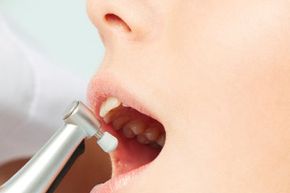Smiling is contagious. That's especially true when a person feels happy and confident about their teeth, making a beautiful smile an important tool to spread joy and make you feel healthier, younger and more alluring.
But over time, as people go about their daily routines of eating, drinking or smoking, tooth enamel can become thin or stained, turning them a yellowish hue [source: American Dental Hygienists' Association]. Tooth color can become less vivid even if a person visits their dentist and brushes their teeth regularly. To fight this yellow tinge, a bevy of over-the-counter teeth-whitening products are available to help enhance and brighten those pearly whites and give them a better chance at brightening the world.
Advertisement
Though the most popular over-the-counter products may not whiten as much, last as long or be as consistent as the products used by dentists, teeth whitening at home can be rather safe and effective [sources: WebMD; Dental Health Online]. People are increasingly drawn to these DIY products because they're easy to use, can be applied in one's free time while washing the dishes or mowing the lawn and are available at the local drug store. They also cost less (ranging from about $10 to $35) than in-office polishing procedures that can cost hundreds of dollars.
But, with so many DIY tooth polishers lining drugstore shelves, a couple of questions remain: How exactly do these products work, and do they hold up to professional whitening methods? Keep reading to learn more about how effective over-the-counter teeth whiteners can be.
Advertisement

